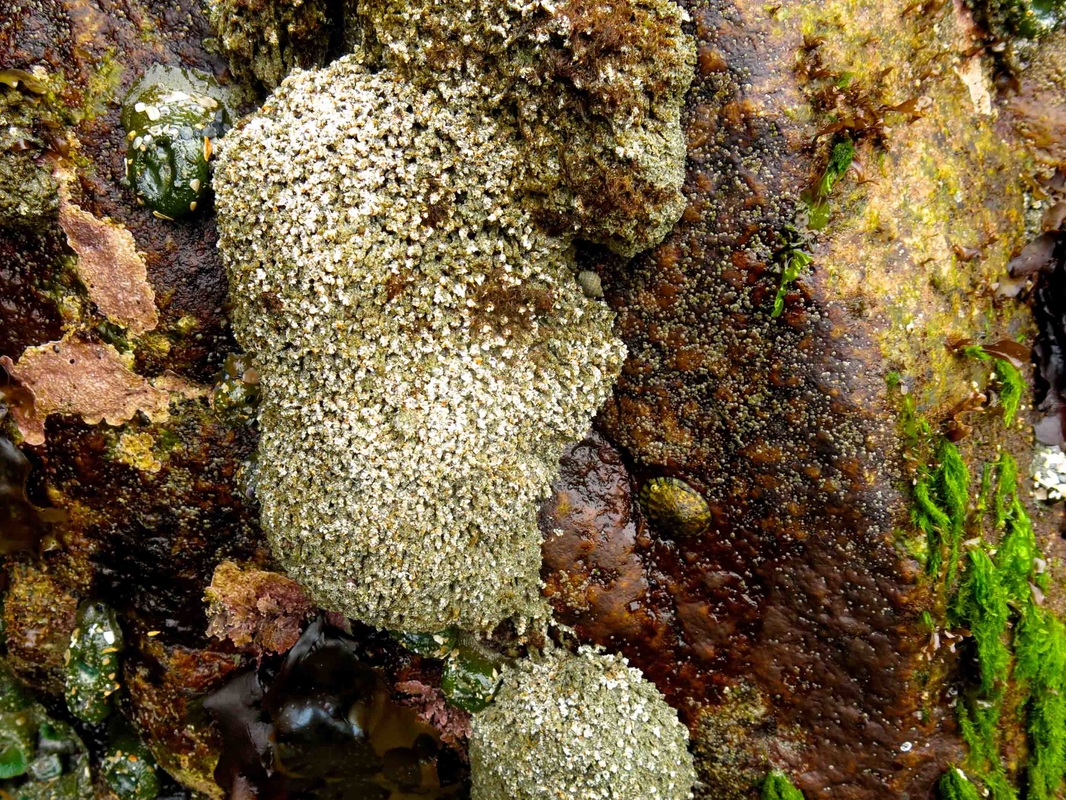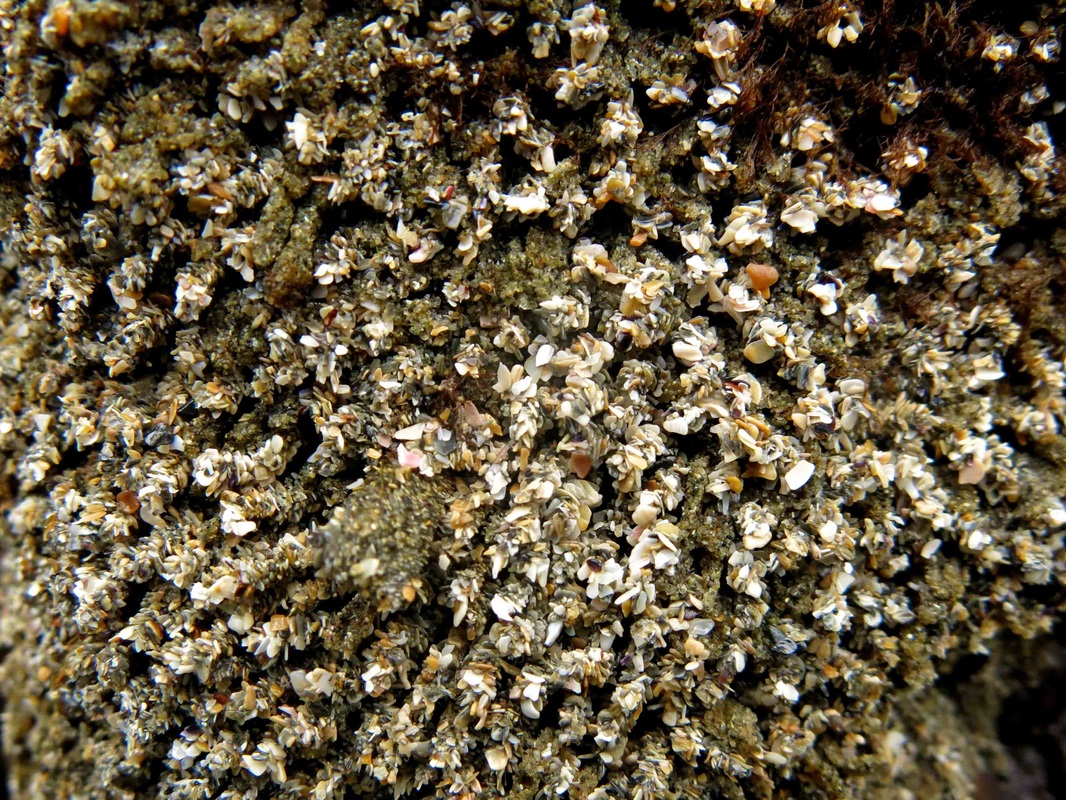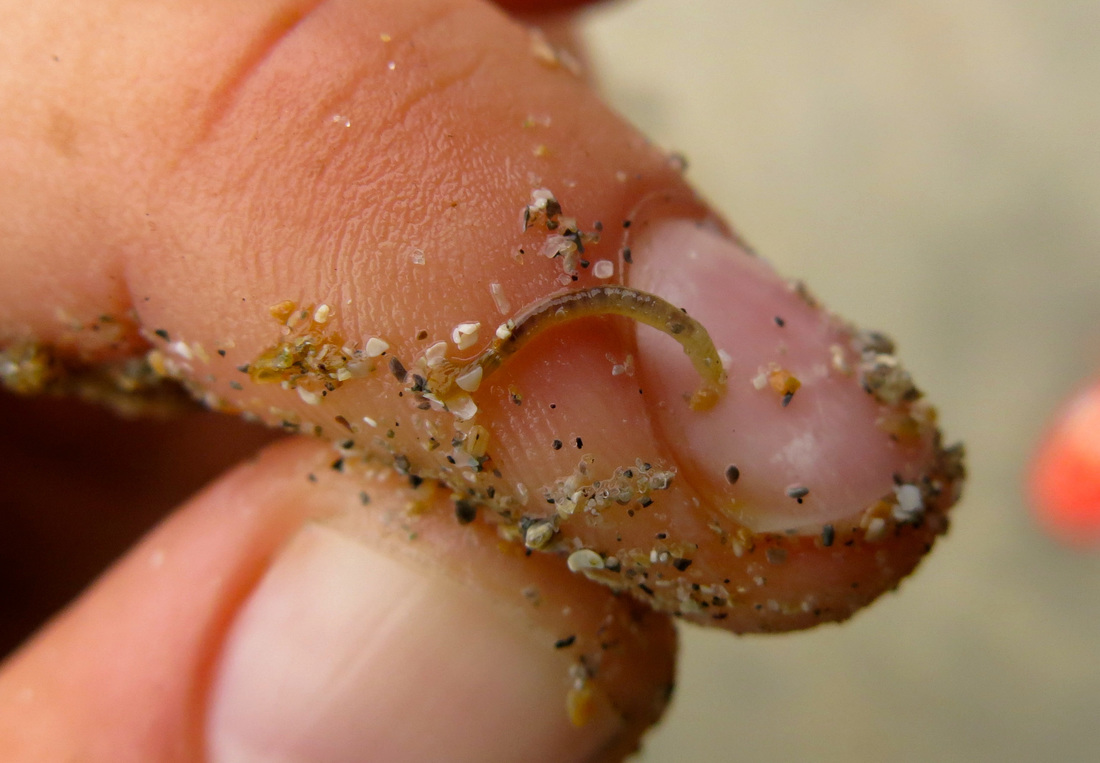Tube-dwelling sea flea • Ericthonius rubricornis
Identification
This amphipod species may only be evident by a cluster of small greyish tubes attached to rock or other substrates. These tubes are used for protection, and only the head of this small brownish crustacean may be seen peeking out.
Habitat & Range
This species builds tube colonies to 15 cm across in the intertidal and subtidal. Reports of its distribution vary; according to Lamb and Hanby it is found in the eastern Pacific from northern Alaska to southern California. It is also reported on both sides of the North Atlantic.
Similar Species
A study in British Columbia's Strait of Georgia found the tube-dwelling sea flea as well as three other species of Ericthonius.
iNaturalist
https://www.inaturalist.org/taxa/552302-Ericthonius-rubricornis
This amphipod species may only be evident by a cluster of small greyish tubes attached to rock or other substrates. These tubes are used for protection, and only the head of this small brownish crustacean may be seen peeking out.
Habitat & Range
This species builds tube colonies to 15 cm across in the intertidal and subtidal. Reports of its distribution vary; according to Lamb and Hanby it is found in the eastern Pacific from northern Alaska to southern California. It is also reported on both sides of the North Atlantic.
Similar Species
A study in British Columbia's Strait of Georgia found the tube-dwelling sea flea as well as three other species of Ericthonius.
iNaturalist
https://www.inaturalist.org/taxa/552302-Ericthonius-rubricornis
References
Costello, M.; Bellan-Santini, D. (2004). Ericthonius rubricornis (Stimpson, 1853). In World Register of Marine Species. Accessed 27/05/2016.
Lamb, A., and Hanby, B. (2005). Marine Life of the Pacific Northwest [electronic version]. Madeira Park, BC: Harbour Publishing.
Macdonald, T.A., Burd, B.J., Macdonald, V.I., and van Roodselaar, A. (2010). Taxonomic and feeding guild classification for the marine benthic macroinvertebrates of the Strait of Georgia, British Columbia. Canadian Technical Report of Fisheries and Aquatic Sciences. 2874:62p.
Authors and editors of page
Kelly Fretwell (2016).
Costello, M.; Bellan-Santini, D. (2004). Ericthonius rubricornis (Stimpson, 1853). In World Register of Marine Species. Accessed 27/05/2016.
Lamb, A., and Hanby, B. (2005). Marine Life of the Pacific Northwest [electronic version]. Madeira Park, BC: Harbour Publishing.
Macdonald, T.A., Burd, B.J., Macdonald, V.I., and van Roodselaar, A. (2010). Taxonomic and feeding guild classification for the marine benthic macroinvertebrates of the Strait of Georgia, British Columbia. Canadian Technical Report of Fisheries and Aquatic Sciences. 2874:62p.
Authors and editors of page
Kelly Fretwell (2016).







